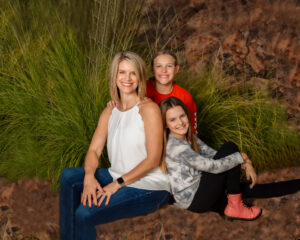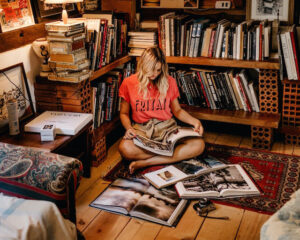This post may contain affiliate links which means I may receive a commission for purchases made through links. I will only recommend products that are valuable to my readers! Your participation has no effect on pricing.
How to take a perfect picture - an introduction
What is composition in photography?
In this visually driven world, photography has become an essential means of communication. People are wondering “how to take a perfect picture” everyday. They want to know how to take the perfect selfie, or how to create the perfect photo for a meme. As a result, everyone wants a photograph that will get them noticed, either as an individual or as an artist. The secret of how to take a perfect picture is composition! Hence, when composed well, a photograph can make the difference between an ordinary snapshot and a captivating masterpiece.
Composition is about arranging elements within your photograph to create a captivating and engaging visual experience. Therefore, it guides the viewer’s eye through your image, highlighting key elements, and conveying your message. Effective composition can turn a simple subject into a compelling story, stirring emotions and sparking curiosity. Mastering composition takes a lot practice and experimentation. For instance, using and combining these techniques is like a creative toolbox. Thus, telling your story, evoking emotions, and taking viewers on a journey through your lens. This is how you are rewarded by taking the perfect picture!
Focusing on what you'll learn
Learn to unravel the challenge of composition in photography. Use this fundamental skill, for example, to elevate your images from ordinary to extraordinary. Whether you’re a beginner or an experienced photographer, understanding the basics of composition can greatly enhance your visual storytelling
Be sure and check out the links below. I included them because they are full of great information. Learn in practical knowledge how to use and implement photograph composition.
The Essence of Composition

Rule of Thirds - A Foundation for Balance
One of the most well-known and widely used compositional techniques is the Rule of Thirds. With this in mind, familiarizing yourself with this one technique will go a long way. Explore different angles and elevations to take the perfect picture you are looking to create!
Imagine overlaying your image with a grid, consisting of two equally spaced horizontal lines and two equally spaced vertical lines. Subsequently creating a transparent tic-tac-toe board right in the middle of your viewfinder. The intersecting points of these lines create 3 sets of vertical of focal points along with 3 sets of horizontal focal points. As a result, aligning your main subjects along these focal points or along the lines themselves, you achieve balance and harmony. This will draw the viewer’s eyes in naturally to the story you want your photograph to tell.  You’ve just experienced the “rule of thirds“
You’ve just experienced the “rule of thirds“
For instance, look at the photo to the right. The focal point when I shot this was the posture, and the eyes of the boy blowing the bubbles. This clearly told the entire story of the photo. Simultaniosly showing ownership of the bubbles, and the unwillingness to share with little brother.
Applying the Rule of Thirds
Experimenting with the “Rule of Thirds” can really spice up your photographs and give them life. Your goal is to draw the eye of the viewer into the photograph with interest and curiosity.
Consider positioning your subject slightly off-center. Try this when photographing a stunning sunset. Place the horizon below the lower third of the frame to emphasize the sky’s beauty or the landscapes majesty. This technique prevents your image from feeling static and plain. To that end, it encourages the viewer to explore the entire scene. You will notice as you perfect this technique, your photos will have more interest, seem more alive, and feel less flat and 2 dimensional.
This is a great practice tool to refine your skills and help you to recognize storylines in photos. Another way is to shoot some stationary objects. Using a light box is a great way of shoot different angles and aspects of objects. Try shooting flowers, dolls, or other small objects. All the time varying your angles. Go outside and shoot trees, building, and people. Experiment with placing them in different sections of the grid created for the ruled of thirds. Change your angles of attack and approach. Try different aspect angles – low, high, and center. all this will show you the different values and help you learn the subtle nuances and how they can effect and affect an entire photographs perspective.
Leading Lines: Guiding the eye

Why leading lines and making the most of them
Leading lines are very powerful tools. They directthe viewer’s gaze by creating a sense of depth within an image. These lines can be literal, like a road or a river, or implied, like a row of trees or the edge of a building. Incorporating leading lines into your composition adds to the photos dynamics and sense of dimension. They also drive the viewer’s eye to your intended focal point.
When utilizing leading lines in photography, ensure they lead toward your main subject. For instance, if photographing a winding path in a garden, position it in a way to guide the viewer’s eye. It should lead to that vibrant bed of flowers at the end. This technique adds a sense of narrative and encourages the viewer to explore the scene step by step.
This method can be enhanced by creating a deep or infinite focal range in the depth of field. If you try different settings in the exposure triangle, you will see varying results. You can see which one best captures what you wanted in the photograph.
Practicing this approach to composition. You will soon begin to develop the skills and learn how to take a perfect picture.
Framing - Creating Depth and Context

Framing involves using elements within the scene to create a “frame” around your subject. This composition approach adds depth and context to your photograph. This will directly draw the viewer’s attention to the subject of the photograph. This will establish a visual entry point for viewing the photo. It can be anything from an archway, a window, or natural surroundings like branches or foliage. 
To Embrace framing into your work, look for opportunities in the environment where you can position your subject. Select either a natural or created visual frame. For example, when photographing a cityscape you could shoot through a window of a building to frame the skyline. Now you’ve added an extra layer of interest and visual depth to the shot.
Experimenting with different methods and ways of adding visual depth can give your images a multi-dimensional feel. This invites the viewer to explore the interaction between foreground and background.
One of my favorite strategies for framing is using objects in the foreground and background to frame. Now by adding effective depth of field focus restraints will further enhance the framing effect when I compose photographs.
The Power of Symmetry and Asymmetry


Symmetry and Asymmetry are two sides of the same coin, each offering unique ways to compose your images.
Symmetry - Finding Beauty in Balance

Symmetry involves mirroring or blending different elements inside the frame to create a sense of balance and harmony. Think of it as guiding the individual viewing the photograph to feel as if they are a part of it. This technique of composition lends an aesthetically pleasing quality to your images, making them feel organized and deliberate.
To embrace symmetry, look for scenes where the environment naturally provides mirrored elements. A reflection in a still body of water or a perfectly aligned row of columns in architecture work perfectly. Placing your subject in the center of the frame can accentuate the symmetry of the composition, resulting in a captivating and visually soothing image. As you master this technique, you will find yourself much happier with your abilities and skillset.
Asymmetry - Dynamic and Engaging

Asymmetrical composition involves placing elements in an intentionally unbalanced manner. This will add energy, tension, and a touch of unpredictability to your images. It can create a sense of movement and draw attention to specific areas of the frame.
 Experiment with asymmetry composition by positioning your subject off-center and using negative space to balance the composition. Try this method. Take a photograph of a lone surfer against a vast ocean backdrop. Now place the surfer at one of the intersections of the Rule of Thirds grid. By leaving a significant portion of the frame open, you’ve created a visual imbalance. The primary subject compared to the open space in the photograph adds intrigue. In turn it encourages the viewer to think about the relationship between the two.
Experiment with asymmetry composition by positioning your subject off-center and using negative space to balance the composition. Try this method. Take a photograph of a lone surfer against a vast ocean backdrop. Now place the surfer at one of the intersections of the Rule of Thirds grid. By leaving a significant portion of the frame open, you’ve created a visual imbalance. The primary subject compared to the open space in the photograph adds intrigue. In turn it encourages the viewer to think about the relationship between the two.
This is a really cool technique to use.
Balancing Elements Through Visual Weight

Visual Weight - The Key to Composition Harmony
Achieving balance in your composition is not just about symmetry or asymmetry. It’s also about managing the visual weight of elements within the frame to compose the perfect picture!
 What is “visual weight” you ask. Visual weight refers to the perceived heaviness or prominence of an element within an image. Put simply, the more it stands out, the larger, darker, or more detailed, the more visual weight.
What is “visual weight” you ask. Visual weight refers to the perceived heaviness or prominence of an element within an image. Put simply, the more it stands out, the larger, darker, or more detailed, the more visual weight.
By including smaller, lighter, and simpler substance to your image, you’ll create visual balance. All critical elements for creating a harmonious composition. This will distribute visual weight throughout the frame.
Becoming proficient at blending symmetry and asymmetry with the visual weight of your composition. This will give your photograph the artistic and eye-catching result that you were striving for.
Something to be proud of.
Perspective and Depth
Composition is not just about arranging elements within a flat frame; it’s also about creating the illusion of depth and three-dimensionality.
Depth through Layers

Incorporating layers within your composition, you add depth and dimension to your images. By including foreground, middle ground, and background elements, you create a sense of immersion. These things draw the viewer into the scene.
To build layers, identify elements that can occupy each level of the scene. For instance, when photographing a mountain landscape, the foreground could consist of wildflowers. The middle ground could showcase the rolling hills, and the background could feature the majestic peaks.
Look at this BMX race pictured above for example. This shot is allowing the viewer to see the leader, challengers as well as the crowd in the background. All of which are on different planes, or layers, giving depth to the image. This layering technique transports the viewer into the environment of the photograph and encourages exploration.
Good composition will tell a very compelling story about the photo. Give your viewers an immersive and inclusive experience of that moment without them ever being there. That is the magic of the perfect picture!
Depth through Perspective

Playing with perspective will also enhance the perception of depth. Go back to the section on leading lines. Think how they converge towards a vanishing point to create a sense of distance and space.
To harness perspective, get a good visual display of how the leading lines in your scene converge toward a distant point. This works exceptionally well when photographing roads, railway tracks, or architecture. Seeing the way the lines converge gives the viewer a clear sense of distance, making the image feel more expansive.
Negative Space - The Art of Simplicity

The Elegance of Negative Space
Sometimes, what you leave out of a photograph is just as important as what you include. Image composition using negative space refers to the empty or unoccupied areas surrounding the main subject. It can be a powerful tool for emphasizing your subject and conveying a specific mood.
 Embrace negative space, experiment with it, try different things. You will be amazed by what you are capable of. Try placing your subject in one portion of the frame and allowing the rest to be dominated by empty space. For instance, when photographing a lone tree in a vast desert landscape. Position the tree in one corner of the frame and let the expanse of sand and sky occupy the rest. This technique accentuates the isolation of the tree and invites the viewer to reflect on its significance.
Embrace negative space, experiment with it, try different things. You will be amazed by what you are capable of. Try placing your subject in one portion of the frame and allowing the rest to be dominated by empty space. For instance, when photographing a lone tree in a vast desert landscape. Position the tree in one corner of the frame and let the expanse of sand and sky occupy the rest. This technique accentuates the isolation of the tree and invites the viewer to reflect on its significance.
Summing up Composition

Mastering the art of composition in photography is a process. It involves experimentation, practice, and understanding of the language of visual interpretation. Work and practice your skills and different techniques. Rehearse and repeat all the various methods of composition. The Rule of Thirds, leading lines, framing, symmetry, asymmetry, visual weight, perspective, depth, and negative space. You won’t be able to fail! Elevate your photography skills to new heights. Remember, each of these techniques is a tool in your creative arsenal. The real magic happens when you combine them in unique and innovative ways. Think outside the view finder!
So, the next time you frame a shot, consider the story you want to tell. What are the emotions you want to evoke? Always think about the journey you want to take your viewers on.
 The final piece of advice I want to pass on to you is some advice I was given that helped me as much as anything else. Look at as many photographs of every kind you can get your hands on. Look at photographs in books, magazines, signs, commercials…anything you can think of.
The final piece of advice I want to pass on to you is some advice I was given that helped me as much as anything else. Look at as many photographs of every kind you can get your hands on. Look at photographs in books, magazines, signs, commercials…anything you can think of.
Now deconstruct those photographers into the bare elements of how they were composed. What techniques were used, analyze the aperture, shutter speeds, camera setting, and ask…how did they effect how you “felt” about the photograph? What did their story tell you? What emotions were touched? Were any of them the “perfect picture”? Critique them, this will give you a better understanding of how to critique your own work.
Practice this little exercise anytime you can, or anytime you think about it, you will start to become “consciously aware” of the composition techniques and the effectiveness of each one. You will find yourself subconsciously”composing” the world around you and it will definitely make you a better photographer!
Remember, it’s all in Your Mind’s Eye!

